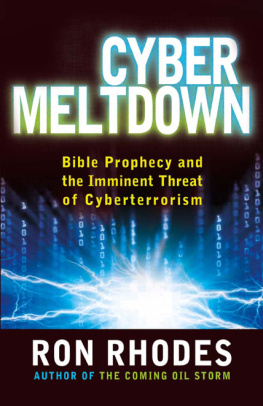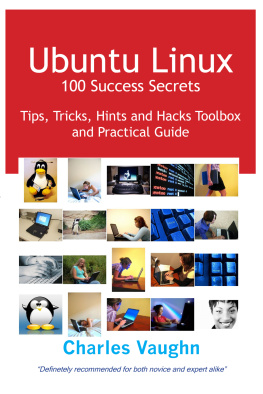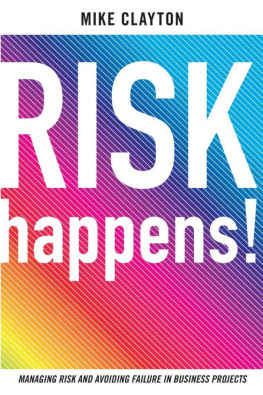Copyright Brian Lancaster 2020. All rights reserved.
No part of this publication may be reproduced, stored in a retrieval system, or transmitted in any form or by any means, electronic, mechanical, photocopying, recording, or otherwise without prior permission of the publishers.
ISBN: 978-1-908431-76-9
Acknowledgements
I would like to thank the following for reviewing the content and giving such valuable feedback during the writing of this book.
Mark Slocombe
Deputy Director and Head of ICT Technical Services at Lincoln University.
Steve Wilkinson
Former Head of Client Services for Europe, HSBC IT Operations.
Stephen Pearson
IT Manager at Patrick Parsons.
Paul Waldren
CEO at Symmetric One and former CIO for Energy and Resources at BT.
Geoff Burke
Former Application Development Manager at Cleveland County Council and BT.
Contents
i Introduction
This book is designed for people who are involved in, or responsible for, delivering Information Technology services. It provides practical hints and tips based on real world experience to help you improve the management disciplines and processes needed to run your technology systems.
Avoiding IT Meltdown is not about hardware and software products. It wont teach you the bits and bytes of how to be a computer programmer or a systems administrator. It is about helping you implement, run, and support technology effectively and efciently in order to minimise disruption and optimise service quality.
Much of my career was spent working in large, global organisations where the scale and complexity of the systems meant there was always plenty to learn about managing IT services. These experiences are set out in this book and can be used to great effect in companies of all shapes and sizes.
In the same way that technical advances in Formula 1 racing become common features in the cars we all drive, I rmly believe it is easier to scale down and apply best practices from larger and more complex organisations than it is to scale up from smaller and less complicated ones.
That said, I am not recommending you impose suffocating process and formality. I strongly suspect that is something many organisations will want to avoid. Nor am I suggesting you should apply every piece of guidance contained in this book. However, there are lots of small, manageable changes you can introduce that will make positive differences to your operation and reduce the chance of you being the next IT meltdown newspaper headline.
If you apply only one of the best practices in this book, I am condent the return will far outweigh the effort invested in reading it. I hope you enjoy dipping into the chapters and I look forward to hearing how you have implemented some of its content.
Brian Lancaster
ii How To Use This Book
The topics in this book are set out in bite-sized chapters grouped under broader IT capability headings. For example, there are three chapters covering change. Whilst the chapters inter-relate in many ways, each can be read in isolation. This means that the book can be read serially from beginning to end, or readers can dip in and out of topics as and when they feel the need.
IT roles and organisations vary greatly. This section is a guide to what you can get from the book depending on the nature of the organisation you work for and your role within it.
Throughout the text the terms organisation, business, and company are used interchangeably to refer to entities ranging from local charities to global corporations.
ORGANISATION SCALE AND COMPLEXITY
All organisations are different in scale, geographic spread, complexity, and culture. The need for rigour and formality will be greater in a large corporate with an IT department of 1000 people than it is in a small manufacturing rm that employs 1 person to look after its computer systems.
This book is written for a wide community, allowing you to take as much or as little from each chapter as you wish. If you are from a smaller organisation, dont be put off or intimidated by references to change management teams, problem managers, and other specialist service management roles. These will be necessary in larger IT departments. The important thing is to focus on the best practices presented in each chapter and think about how you might use them in your scale of organisation.
Ultimately, you can decide how much formality and method is appropriate in your world.
To begin with, we will consider different IT team/department sizes. Then we will look at two cases that apply irrespective of size: (i) outsourced services and support; and (ii) the growing technology estate.
One IT support person or an IT Manager
Organisations that operate a small amount of their own technology, outsource all their IT services to a third-party supplier, or have a hybrid combination. You will have a designated IT Manager or a member of staff who provides localised IT support, supplemented by external third-party support.
Your need for formal process will be low, but it will not be zero. You should evaluate the principles and approaches set out in this book and consider applying the most appropriate with a light touch. The information will help you form reasonable expectations of your IT service providers and there are lots of practical hints and tips you can use when managing those third parties. The material may also help when you are explaining some of the IT challenges to executive management.
IT team of up to 20 professionals
Small to medium enterprise organisations that run some of their own applications and infrastructure as well as using outsourced services. You will have an IT Manager or Head of IT and a mixed team of programming and support roles.
There is an increasing need for IT management processes in larger teams and you may have some in place already. You will be able to apply learning points from this book to mature and supplement those processes without having to impose extreme rigour.
There is lots of advice to help you drive continuous improvement of your IT function and the quality of service you deliver to your user community.
IT team of 20 to 200 professionals
Medium enterprises and corporates that develop and manage many of their IT services in-house. You will have a Chief Information Ofcer (CIO), or similar, with managers leading separate teams such as development, operations, infrastructure and security.
With increased size and complexity comes a greater need for formality and scalability. Many of the management disciplines will already be implemented inside your IT division, with varying degrees of maturity. This book can be used by roles throughout the IT department to help strengthen those capabilities, supplement them where necessary, and embed them within the organisation.
IT team of over 200 IT professionals
Larger enterprises and corporates that run most of their own IT services inside their own data centres. You will have a Chief Information Ofcer (CIO), or similar, with a layered management structure leading separate and specialist teams in application development, operations, infrastructure and security.
You will have mature processes and controls in place and many of the hints and tips in this book may already be standard practise for you. However, IT departments of this size are often structured into specialist teams resulting in some roles having limited visibility of what happens across the wider organisation. This book will help everyone gain a broader perspective and understanding of the IT management issues and challenges faced by all teams in the IT division. It may also help you supplement existing best practices in areas such as change implementation.



















